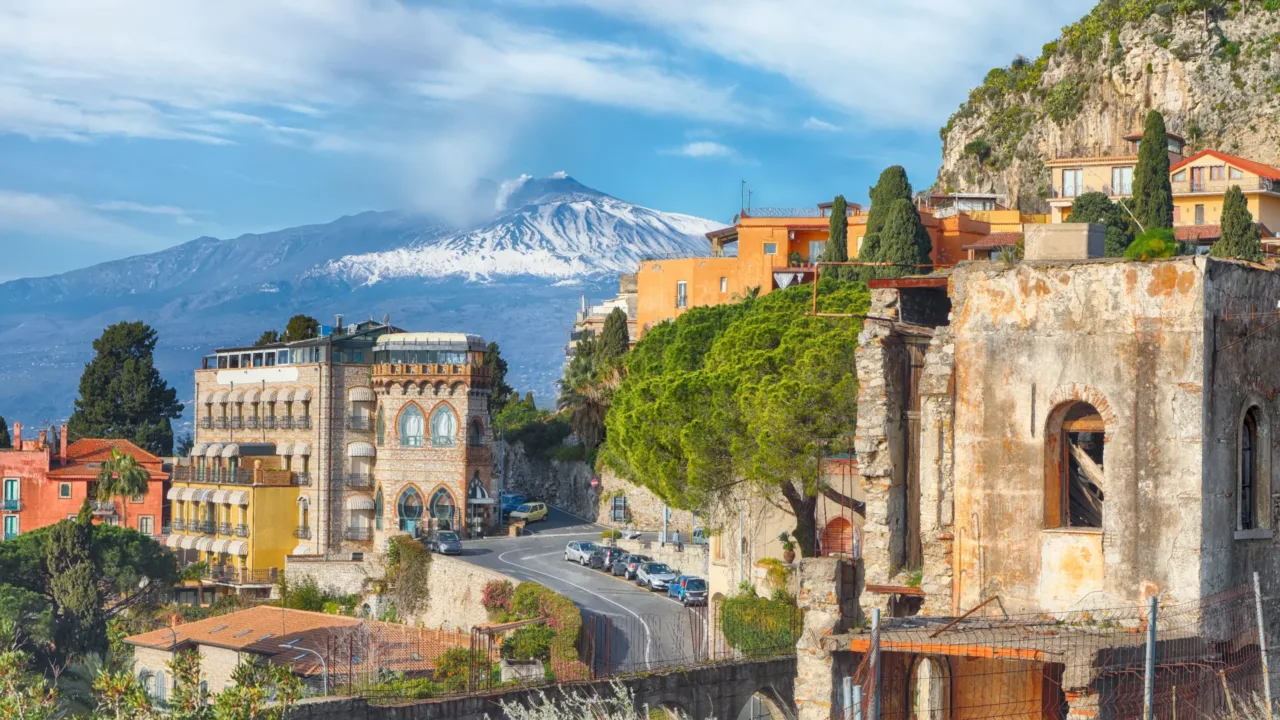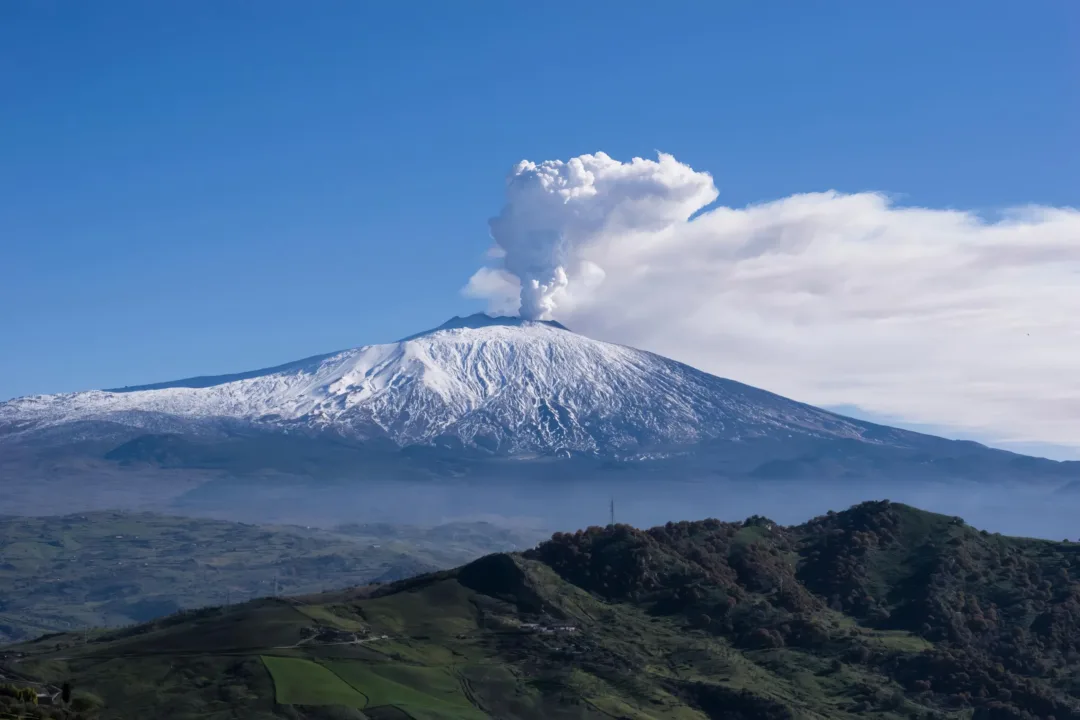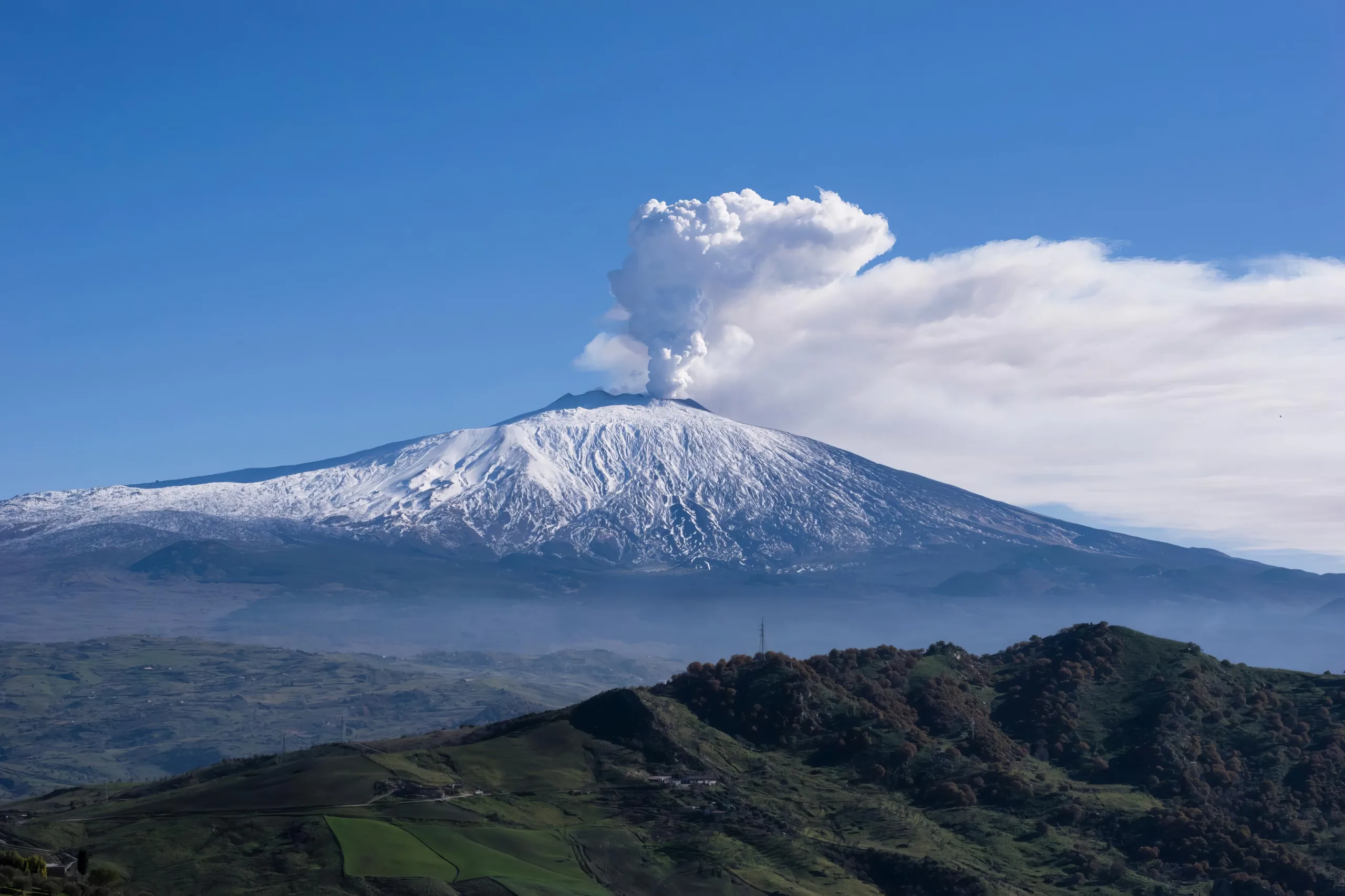Where is Mount Etna?
Mount Etna, located on the east coast of Sicily, Italy, is an active stratovolcano and one of the most famous and iconic natural landmarks in the country. Rising majestically to an impressive height of 3,350 meters (10,990 feet), it dominates the surrounding landscape with its sheer size and volcanic presence.
The history of Mount Etna stretches back thousands of years, with its first recorded eruption dating back to 1500 BC. It has since erupted numerous times, shaping the geography of the region and leaving a lasting impact on the local communities.

One of the remarkable features of Mount Etna is its frequent activity, which has earned it the reputation of being one of the most active volcanoes in the world. Its eruptions are often accompanied by dramatic displays of lava fountains, volcanic ash clouds, and the occasional release of pyroclastic flows. These powerful eruptions have shaped the surrounding terrain and created unique geological formations.
When was the last eruption?
The last eruption of Mount Etna, located in Sicily, Italy, occurred on February 16, 2021. The eruption caused a spectacular display of lava fountains and ash plumes, which lasted for several days. The lava flow did not pose any danger to nearby communities, but it did disrupt air travel, forcing the closure of the Catania airport for a short period. Mount Etna is one of the most active and well-studied volcanoes in the world, making it a popular destination for tourists and scientists alike.
May, 2023 Mount Etna Volcanic Eruption

On May 21, a frightening eruption occurred on Etna, Europe’s largest active volcano. A ball of fire formed in the sky with the volcanic lava he had spewed out. The view was impressive. Catanians, who had been breathing easily since 1992, had the nightmare again. Ashes seemed to flow over them. The first place the hot lava reached was Fontanarossa Airport. It was closed immediately. Then the traffic on the highway was stopped. The seismologists had predicted a stir, but they didn’t expect this much.
In fact, precautions were taken for the embers flowing down from the crater at an altitude of 3,300 meters. But how Vesuvius in Naples swallowed the town of Pompeii in 79 had always been a nightmare for those; who lived at the foot of the huge volcanic mountain.
A few hours after the big bang, there was a 3.2 scale earthquake in the region. The earthquake in the sky had descended under the ground this time. The Roman government immediately stepped in. It took civil defense measures for natural disasters. Some settlements at the foot of the alert mountain were evacuated for precautionary measures and a yellow alert was issued.
After the runways of Fontanarossa Airport were cleared of volcanic ash, suspended landings and take-offs of aircraft were allowed on a limited basis. However, from time to time it was closed again. Interestingly, tourists flocked to Catania after the unexpected violent eruption of Etna volcano.
Foreigners in particular lined up on the way to the crater to witness this natural sight. However, dangerous climbing was not allowed. As the earthquakes cannot be predicted when, how, and at what intensity. The fact that Mount Etna will experience its heaviest 31 years later has brought up the expectation of ‘The big one’ again.
The volcanic activity of Mount Etna has both positive and negative effects on the region.
On one hand, the volcanic soil is incredibly fertile, making the slopes of the volcano ideal for agriculture. Vineyards, orchards, and olive groves flourish in the rich volcanic soil, producing high-quality crops and contributing to the local economy. On the other hand, the eruptions pose a threat to nearby communities, as lava flows and ash fall can cause damage to homes and infrastructure.
Despite the potential risks, Mount Etna continues to attract visitors from around the world; who are captivated by its natural beauty and geological significance. The volcano offers a range of experiences for touris; from guided hikes to explore its craters and lava flows, to cable car rides that provide stunning panoramic views of the surrounding landscape.
The diverse flora and fauna found on Mount Etna further add to its allure. As visitors ascend the slopes, they will encounter different ecological zones, each with its own unique plant and animal species. From pine forests and Mediterranean shrublands to alpine meadows, Mount Etna is a haven for biodiversity.
The presence of Mount Etna has had a profound cultural impact on the local communities. The volcano has been an inspiration for artists, writers, and poets throughout history, with its majestic presence and fiery displays stirring the imagination. It has also been an important religious and cultural symbol for the people of Sicily, who have developed rituals and traditions associated with the volcano.
In terms of scientific research, Mount Etna provides an ideal natural laboratory for studying volcanic activity.
Its accessibility, frequent eruptions, and relatively predictable behavior have made it a focal point for volcanologists and geologists seeking to deepen our understanding of volcanic processes and mitigate the risks associated with volcanic hazards.
In conclusion, Mount Etna stands as a powerful and captivating natural wonder in Italy. Its imposing presence, frequent eruptions, and rich geological history make it a must-visit destination for; nature enthusiasts, adventure seekers, and researchers alike. The interplay between the volcano and the surrounding landscape, the cultural significance it holds, and its ongoing contribution to scientific knowledge all combine to make Mount Etna an extraordinary and iconic landmark that continues to inspire and amaze.
References: Wiki

